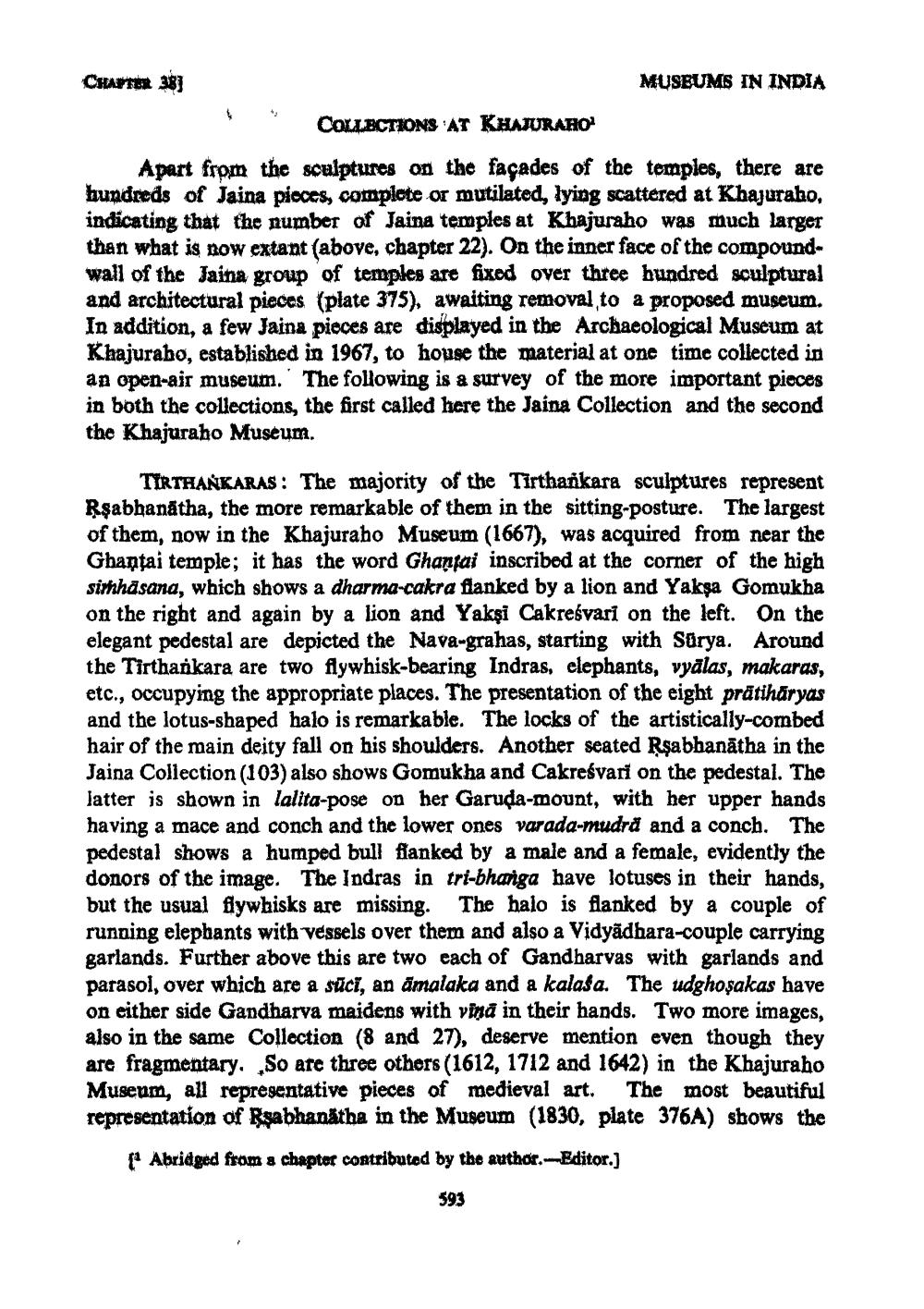________________
CHAPTER 38
MUSEUMS IN INDIA COLLECTIONS AT KHAJURAHO Apart from the sculptures on the façades of the temples, there are hundreds of Jaina pieces, complete or mutilated, lying scattered at Khajuraho, indicating that the number of Jaina temples at Khajuraho was much larger than what is now extant (above, chapter 22). On the inner face of the compoundwall of the Jaina group of temples are fixed over three hundred sculptural and architectural pieces (plate 375), awaiting removal to a proposed museum. In addition, a few Jaina pieces are displayed in the Archaeological Museum at Khajuraho, established in 1967, to house the material at one time collected in an open-air museum. The following is a survey of the more important pieces in both the collections, the first called here the Jaina Collection and the second the Khajuraho Museum.
TIRTHANKARAS: The majority of the Tirtharkara sculptures represent Rşabbanátha, the more remarkable of them in the sitting-posture. The largest of them, now in the Khajuraho Museum (1667), was acquired from near the Ghantai temple; it has the word Ghanfai inscribed at the corner of the high simhasana, which shows a dharma-cakra flanked by a lion and Yaksa Gomukha on the right and again by a lion and Yakşi Cakreśvari on the left. On the elegant pedestal are depicted the Nava-grahas, starting with Sürya. Around the Tirthankara are two flywhisk-bearing Indras, elephants, vyālas, makaras, etc., occupying the appropriate places. The presentation of the eight prätihāryas and the lotus-shaped halo is remarkable. The locks of the artistically-combed hair of the main deity fall on his shoulders. Another seated Rşabbanātha in the Jaina Collection (103) also shows Gomukha and Cakreśvari on the pedestal. The latter is shown in lalita-pose on her Garuda-mount, with her upper hands having a mace and conch and the lower ones varada-mudra and a conch. The pedestal shows a humped bull flanked by a male and a female, evidently the donors of the image. The Indras in tri-bhanga have lotuses in their hands, but the usual flywhisks are missing. The halo is flanked by a couple of running elephants with vessels over them and also a Vidyādhara-couple carrying garlands. Further above this are two each of Gandharvas with garlands and parasol, over which are a sūci, an amalaka and a kalasa. The udghoşakas have on either side Gandharva maidens with vina in their hands. Two more images, also in the same Collection (8 and 27), deserve mention even though they are fragmentary, So are three others (1612, 1712 and 1642) in the Khajuraho Musenm, all representative pieces of medieval art. The most beautiful representation of Rsabhanatha in the Museum (1830, plate 376A) shows the
Abridged from a chapter contributed by the author.--Editor.]
593




